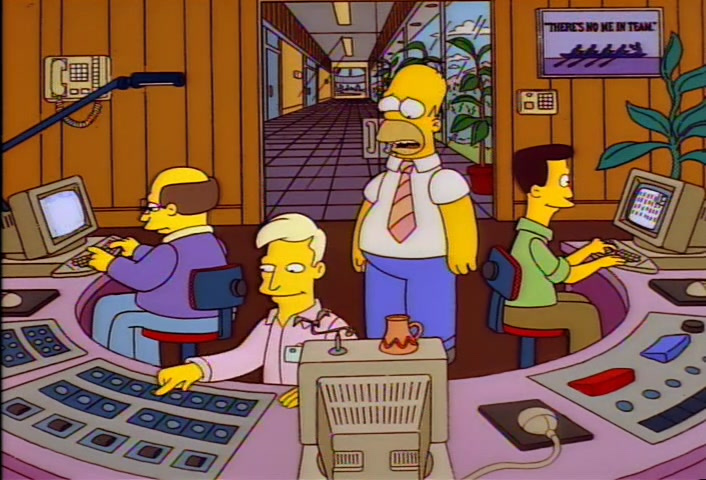How to respect time or how to become an effective team leader.

Do I need to manage time?
If you have never asked this question, then you probably have problems with the organization of the workflow.
When you work in IT, you need to know how to set tasks, in what sequence to perform them, to whom and what can be reassigned, and what should be postponed, all this concerns not only team leaders, but also each employee who should be able to understand tom heap of tasks that he put the head. After all, the correct organization of working time is an unconditional indicator of performance.
')
The higher the efficiency of working time, the faster and better you can complete any project. As we know, time is money, and the time saved is the money earned for the company and therefore for ourselves. If you are a manager or just aim at managers, I hope you have convinced why one of the most important qualities of a manager is the ability to manage your time and the time of the entire department.
Most likely some of you unconsciously apply some principles in practice to some extent, or have already begun to use time management tools. But what seemed so obvious is actually not so simple.
Let's understand the terms and tools.
Time can only be felt by yourself when you set certain reference points, and when it is measured in segments.
One of the most important terms is the capital of time , this is all the time that is available to us for future tasks, that is, This is a kind of countdown, and you need to understand that it is limited.
The second such term is time budgeting , i.e. the allocation of time to perform any task.
David Allen is a pioneer in the field of time management, and he in his book “Getting things done” introduced the eponymous term GTD (bring your tasks to the end).
The main thesis of this book is that all cases coming to you need to be registered , everything - this means everything without a trace. You can perform tasks later, but you need to register them immediately as they appeared. After you have formed a “dump” of such tasks, you need to start solving them.

To do this, follow these steps.
- Choose. It is necessary to determine everything that you must do.
- Analyze. For each task, it is necessary to determine what the next step will be. If the task takes no more than a couple of minutes, it is better to do it right away. For longer tasks, it is necessary to determine an adequate time for solving this task, or delegate it, if possible.
- Organize All important meetings must be recorded in the calendar. All other tasks are transferred to the task list for the future. The least urgent tasks need to be stored in the list “I'll do it someday”.
- Make a review. Every day you need to view the task list and calendar. Weekly you need to view a list of projects, future tasks and delegated tasks.
- Do It. Complete the task given its time, importance, and energy expended.
- Have a rest. Anything that has not been done will pop up on the next review.
And now I want to go to the task registration tools. The most important thing to remember is that the head is not such an instrument. And at the moment there are many offers on the market by task managers and calendars (I will not advertise anything), everyone can decide for himself, in extreme cases, you can use a diary.
One of the tools for determining the type of problems is the Eisenhower matrix.
A) Urgent and important matters. These are urgent problems, critical situations, etc. If tasks began to appear here, it most likely means that you did not notice something in other quadrants. The situation was missed out of control, either because of laziness or because of my short-sightedness. Naturally, if you constantly solve such problems, you can burn out very quickly. And all your free time will take tactical tasks, and there will be no time to think about strategy.
B) Important, but not urgent. There will be the most promising and ongoing tasks, their prevention, strengthening of ties and relationships, new opportunities. If most of your tasks are in this quadrant, this means that you are on the right track. Being in it, you form in yourself good habits, a planned way of solving problems, efficiency, and of course, with time, you can better see the perspective and expediency of solving various kinds of problems.
C) Urgent, but unimportant tasks. They distract you from the main cases, these are the most unexpected orders that you give up at work. And interfere to focus on important goals. This is usually delegated activity. Here we can also include meetings, because often the majority of people who are there do not play a major role, or are not needed there at all.
D) Non-urgent and unimportant matters. These are tasks without benefit and need to be dealt with in the last place, but we deal with them first. This is what distracts us, pleasant activities, they are also called time-eaters. This may include social. networks, web surfing and the like.
The conclusion suggests itself, you need to keep yourself in quadrant B and as little time as possible to devote to the quadrant G.
So that it was always necessary to use a specific tool - a decision-making system.
There are two parameters time- consuming (T) and energy consumption (E) , each of them is estimated on a 10-point scale and is considered so T + E / 2 and we get the cost of solving our problem.
Two more parameters are added to them: the results now (R1) are all that is useful, which brings profit now and the potentially predicted result (R2) is all that we see in the perspective of the task, also evaluated on 10 the point scale is considered as R1 + R2 / 2 and we get the effectiveness of our task. And in order to get the value of our task, we divide the results by costs.
There are undoubted advantages of this system, we will have a notion of the value of the case, an emphasis on the main thing, and we learn to clarify the value of our affairs and we can also identify the cases that can be entrusted. There are also disadvantages, subjectivity, and of course, concentration on one’s own affairs and on oneself as a whole is added.
Then I want to focus on the Pareto principle (20/80)

Its essence lies in the fact that, by choosing the minimum of the most important actions, you can quickly get a significant part of the planned full result, and further improvements may be ineffective and not justified.
Do first of all those tasks whose performance is the greatest
Surely you had such that while you are busy solving one task, you have other smaller and seemingly urgent things falling for you, for which you immediately grab, postponing the main task, as a result your efficiency decreases and the result will be completely not what is expected of you. In this case, you can review the priority of tasks and transfer part of it to other employees, as well as assign a responsible person.
And of course you need to mention Brian Tracy, with his frog principle

Its essence is that the most unpleasant thing for us needs to be done first and foremost , and then we take on other things and for us they will be less unpleasant and, accordingly, more willingly, we will carry them out. A striking example is the maintenance of technical documentation and reports.
The following principle, introduced by experts, is the principle of eating an elephant

Any business can be done slowly, i.e. we are a big business we are sawing into small tasks that will not cost us much effort , and we will systematically do them, and in the end a big task will be solved. Although of course she will eat a lot of time, but most importantly, a large and complex task will be completed.
When a new project is launched, the final goal is often known, although it often happens that it is not known, but how to get to it. First of all, it is very important to gradually plan the project by splitting it into small tasks, it is very important to clearly distribute responsibilities among the developers, it is important to appoint a responsible person and give specific deadlines for the oral report on the result, to understand that everything is going in the right direction, you also need to clearly set the task not only the team as a whole, but also make sure that everyone understood their task one hundred percent, especially for new employees.
Then I want to tell you that the important principle is - the ability to say polite "no"

And the main idea of this principle is that it is necessary to refuse not the person, but the task. You can make a list of such tasks, and bring matters that do not bring any benefit and only distract us from achieving really important things.
If it is difficult for you to refuse people, well, for example, you understand that a person’s request will not bring anything for you personally, that is a simple way: take a break, decide for yourself whether you will fulfill the person’s request and only then give an answer. Well, the applicant must understand that when he asks, he may receive a refusal.
Well, when we talk about time management, it is necessary to mention who steals our time.
Let's talk about the eaters of our time

Dan Kennedy called them vampires and established a hierarchy for them.
- The most insidious of them is a vampire-minute , i.e. these are insignificant requests that seem to be worthless to you, but they are stealing precious time from you. Of course, in the work, say HelpDesk, it is impossible to postpone urgent tasks, but in personal life you need to look at similar problems.
- Next comes the vampire nonsense , his goal is to confuse you and distract you from essential tasks.
Fighting it is necessary to weigh for yourself whether this task will lead you to anything.
- The vampire door is open , this is when colleagues from different departments come to you that distract you, they can steal a lot of time from you.
- Vampire phone , it is constantly distracting you calls, notifications and the like.
A good way to deal with it, naturally turn it off when you need to focus on an important task.
- Vampire-non-punctuality , you need to demand from other people respect for their time.
- Vampire crowd , it means to follow others and do as they do. You need to avoid this, try not to give in and follow your schedule.
- Vampire aimlessness , deeds that are done without a goal.
- Vampire whiner , this is an excuse for their failures.
And of course, these are not all the devourers of our time, there is also the doing of someone else's work , and trying to do too much at one time , and poor planning of the working day, and much more.
Now I want to mention that it is necessary to reduce the time to perform tasks and force yourself to perform previously accumulated tasks. Before you begin to perform tasks, you must reduce the amount of time to complete them .
And one of such effective systems is Kaizen , it teaches to increase the amount of effective time and teaches to organize your work space .
In Russian, it sounds like 5C:
- Sort: you need to get rid of unnecessary.
- Observe the order: determine each thing its place.
- Keep the workplace clean.
- Standardize workplace cleanliness procedures.
- Improve order: stimulate its maintenance.
For example, a data center engineer needs to install a new server or replace an existing one, he takes a server with him, takes a sled to him, when he comes to the rack, it turns out that he forgot the key, puts the server, sleds, returns for the key, took the key, opened the rack, dismantled the old the server sets up a sled for a new one, already tired, begins to mount the server and it turns out that these sleds do not fit it.
Because of the seemingly nonsense, a significant amount of time was spent.
And again , let's say the enikei needs to install the program to the user, he goes through the entire office, inserts a USB flash drive into the computer, frantically searches for the desired program in the folders “new folder”, ”new folder (2)”, ”123”, ”qwerty”. He opens the “distrib” folder, it is empty, he takes out the flash drive, runs to his bedside table for another flash drive, having made ten steps, he realizes that he gave the flash drive to Pete, who is sick today. And he understands that the necessary program can now only be downloaded, and he returns to his workplace, on the way another user puzzles him with another problem, and this can be continued indefinitely. As a result, the man worked all day, but everyone was not happy, including himself.
After these examples, I would like to convey such an idea that the organization of the working space is very important for the effective work of the company and the company's management should cultivate the correct principles of work among employees at different levels.
We have learned everything that is necessary for the proper organization of working time. And it is right to collect tasks and set priorities for these tasks, as well as to deal with what distracts us from them and how to save time to solve them. And finally, you can begin to implement them.
Now let's analyze the methods by which we can and should force ourselves to perform certain tasks.

There is an interesting method “principle of tomato” - to perform any task, you need to take a 25 minute period in which you are not supposed to be distracted from the task, then take a short break, again 25 minutes, then again a short break and thus you cut things, to be performed.
The next method is the time pie , its essence is in the classification of working time, it’s no secret that most of our business is almost monotonous and daily. So, you can begin to lead the time tracker of our tasks, the goal will be to determine what our time is spent on and further optimize it and find out if you are wasting time on unnecessary tasks or are not typical of where you can unload yourself and give up.
A very useful thing for newcomers to the company, or vice versa for particularly busy guys.
Our next step is tools.
- Anchor is a preparation for performing a task, and it is advisable to prepare yourself unconsciously.
- To sharpen a pencil is to prepare the tools so as not to be distracted by their search, so that they are all at hand.
- Hole the cheese - any task must be performed on small "bites" or steps.
- Reward yourself - in the end you have to reward yourself; naturally, the reward should be adequate to the task.
And a little bit about vague tasks.
Work in uncertain conditions - when the task is not completely clear to us, but it is necessary to undertake it, and in the future we receive any additions or clarifications for its implementation and not everything will be known in advance.
Such tasks are typical for project managers, and in principle for high management. And to perform such tasks, you need to adjust your original plan when getting new details , you do not need to think if you have not received a specific task, then the plan to solve it will be uncertain and you will not need to correct it.
An adequate plan should be drawn up for such a task, and when new details are received, the plan should be adjusted, or it should be changed altogether.
Well, it is necessary to make a generalization in order to perform the tasks dumped on us.
The main thing is that it is necessary to make up the correct mode of the day and know your weak and strong points , everything must be done systematically, even in small steps. And even a difficult thing will become familiar to you, and in the end it may even be pleasant. And knowing yourself is very helpful in making all sorts of decisions .
At the initial stage, you need to pay special attention to the time eaters, and you need to cultivate good habits in yourself. Rewards and punishments, public promises - are needed for motivation to perform various tasks
Here we come to an end . In this small article I set myself the task of not telling you a lot of information on this topic, but to induce you to manage your time and start respecting it if you are not doing it yet.

Literature used in the article:
- Kelly McGonigal “Willpower”
- Dan Kennedy “Hard Time Management”
- Brian Tracy “Eat a frog! 21 ways to learn to keep up ”
- David Allen “How to deal with matters”
Source: https://habr.com/ru/post/334348/
All Articles